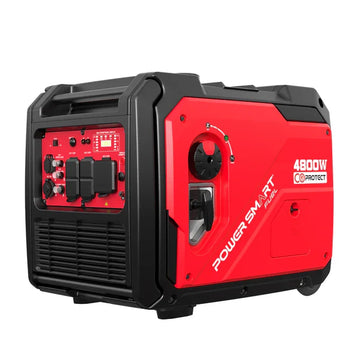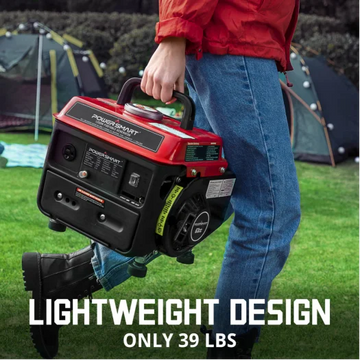Tools and Equipment for Effective Snow Blower Repair
Must-Have Hand Tools for Snow Blower Upkeep
Keeping a snow blower in good shape is vital for its durability and efficiency. A solid collection of tools forms the foundation of successful repair efforts. Essential hand tools like screwdrivers, wrenches, and pliers are critical for jobs such as securing loose fasteners or swapping out damaged components. A socket set proves vital for reaching tricky bolts, particularly in tight spots on the machine. Plus, a torque wrench guarantees bolts are fastened to the proper level, avoiding issues from over-tightening or leaving them too loose during use.
For detailed fixes, needle-nose pliers are useful for managing tiny parts like springs or clips. Hex keys, also called Allen wrenches, are necessary for tweaking certain bolts on snow blowers. It’s wise to have a strong scraper or brush on hand to remove buildup from the auger and chute after each session.
Power Tools to Speed Up Repair Work
Power tools cut down on both time and effort during repairs. An electric drill with different bits works well for making holes or removing several screws fast. When you need to slice through metal pieces or tough bolts, an angle grinder becomes a key asset. Cordless impact drivers bring convenience and strength for tackling stuck or rusty bolts.
A heat gun can soften plastic parts, making them simpler to take off or adjust. Likewise, a Dremel tool with various tips offers flexibility for precise jobs like smoothing or shaping small components.
Safety Gear for Safe Repairs
Safety must always come first during repair tasks. Key protective items include gloves to shield hands from sharp surfaces and chemicals. Safety goggles guard your eyes against bits flying around during cutting or grinding. Ear protection is a must when operating noisy power tools.
A dust mask keeps you from breathing in fine dust while working on older machines that might shed particles during cleaning or teardown. Non-slip shoes provide steady footing in icy garage conditions common in winter.
Maintenance Kits to Ease Routine Care
Complete Oil Change Kits
Changing oil regularly keeps the engine running smoothly. Full oil change kits usually contain top-grade engine oil, an oil filter, and a pan to catch used oil. Some even include gloves and funnels for a tidier, easier process.
All new gas-powered snow blowers feature four-cycle engines, which simplifies upkeep since mixing oil with gas isn’t required. Still, swapping out oil now and then is crucial to avoid engine damage over time.
Lubrication Basics for Bearings and Moving Parts
Applying lubricant to moving pieces ensures they work well and cuts down on wear from friction. Silicone spray lubricants suit metal-to-metal contact areas like augers, impellers, and chute joints. Grease guns let you apply grease exactly where it’s needed in bearings, keeping them running smoothly even in cold weather.
The dual blades on two-stage snow blowers need consistent lubrication to stay effective in thick snow.
Fuel Stabilizers for Extended Storage
Fuel stabilizers play a big role when putting your snow blower away for the off-season. They stop gasoline from going bad, which can gum up carburetors and make starting tough later. Mix the stabilizer into fresh fuel following the maker’s directions, then run it through the system.
Stale gas remains the top reason for small engine troubles. Using a stabilizer extends fuel life and keeps things running well when winter rolls back around.
Workspace Setup for Smooth Repairs
Creating a Perfect Repair Area
A tidy workspace boosts efficiency during fixes. A solid workbench with a vice grip lets you hold parts steady while you work. Good lighting matters a lot. Think about adding LED lights above your station for a clear view of small parts.
Keep tools you use often close by. Mount pegboards on walls or use magnetic strips for storage. A spot with shelves can store extras like belts, filters, and spark plugs.
Storage Options for Tools and Supplies
Good storage keeps tools from getting lost or harmed over time. Get a tough toolbox with sections to sort hand tools neatly. For bigger power tools, wall racks or cabinets offer safe spots while freeing up floor space.
Labeling drawers and bins makes finding things fast during urgent repairs. Also, store lubricants, oils, and similar items in a place with steady temperatures to stop them from breaking down in extreme cold.
Tips for Picking the Right Snow Blower Accessories
How to Select Matching Replacement Parts
Choosing the correct replacement parts for your snow blower is key to keeping it running well and lasting long. Compatibility is the top concern when buying new pieces. Check your snow blower’s manual first. It usually lists suggested parts and details to guide you.
All new gas-powered snow blowers have four-cycle engines, so no oil-gas mixing is needed. But you must use the right oil and filters for your model. When replacing belts, augers, or impellers, confirm their size and material match the originals. Poor-quality or wrong parts can hurt performance or cause damage.
For two- or three-stage snow blowers, maintaining dual blades and larger augers is critical. The dual blades on two-stage models need regular lubrication for top results in heavy snow. Also, consider high-quality plastic chutes. They resist rust and cracking better than steel ones.
Why Stainless Steel Bearings Shine in Tough Weather
Snow blowers face harsh winter settings, making stainless steel bearings a smart choice. Unlike regular bearings that rust from moisture, stainless steel ones hold up against corrosion and wear. This strength keeps parts like augers and wheels moving easily, even in freezing cold.
Lubrication matters for these bearings too. Adding grease often keeps them working well all season. In places with lots of heavy snow, stainless steel bearings add dependability, cutting the chance of breakdowns when you need the machine most.
Preventative Steps to Reduce Repair Needs
Proper Fuel Handling and Care
Fuel problems often lead to snow blower repair needs. Stale gas tops the list of small engine issues, so smart fuel habits are a must. Use fresh gasoline with a high octane rating. Old fuel breaks down and can clog carburetors.
Add a fuel stabilizer before off-season storage to keep gasoline from spoiling. Run the engine a few minutes after mixing it in to spread it through. This easy move prevents startup woes when winter hits again.
For battery-powered snow blowers, store batteries in a dry, steady-temperature spot to keep them lasting longer. Always follow the maker’s tips on battery care and charging.
Cleaning and Storing Your Snow Blower Post-Winter
Good end-of-season care can lower repair needs and stretch your snow blower’s life. Start by clearing all debris off the machine. Focus on the auger housing and chute where snow piles up. Use a scraper or brush made for this to avoid harming parts.
Check moving pieces for wear or damage before storing. Swap out worn belts or blades right away instead of waiting for next season when parts might be hard to find during busy winter times.
Drain leftover fuel from the tank. Or add a stabilizer if you’ll leave fuel in over summer. Also, unplug spark plugs or remove batteries from electric models for safety while stored.
Keep your snow blower in a clean, dry spot away from sunlight or dampness. A weather-resistant tarp over it adds protection from dust and moisture.
Frequently Asked Questions
What are common accessories for snow blower upkeep?
Key items include replacement belts, stainless steel bearings, fuel stabilizers, lubrication sprays, and sturdy plastic chutes.
How do I keep my snow blower from needing repairs often?
Routine care like lubricating parts, storing fuel right, and cleaning after use can cut repair needs a lot.
Why choose stainless steel bearings?
They resist rust better than standard bearings, ensuring steady operation in rough winter weather.
What’s the best way to store my snow blower in summer?
Clean it well, drain or stabilize fuel, remove spark plugs or batteries, and keep it in a dry spot with a weather-resistant tarp.
Learn more about PowerSmart®’s customization service tailored for outdoor power equipment fans!



